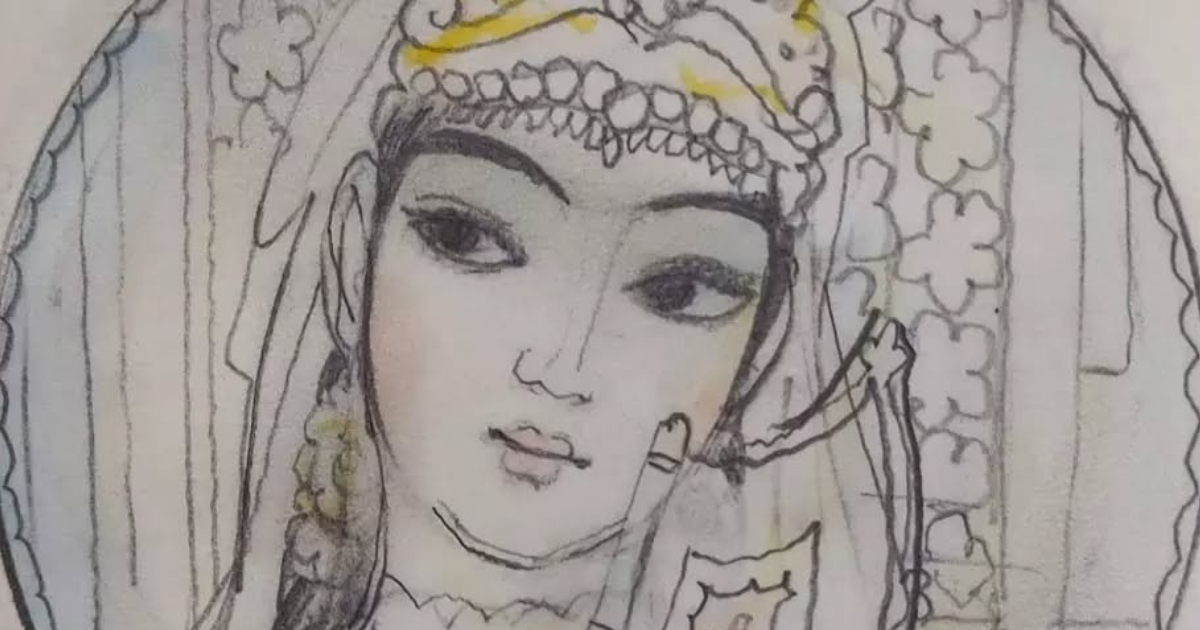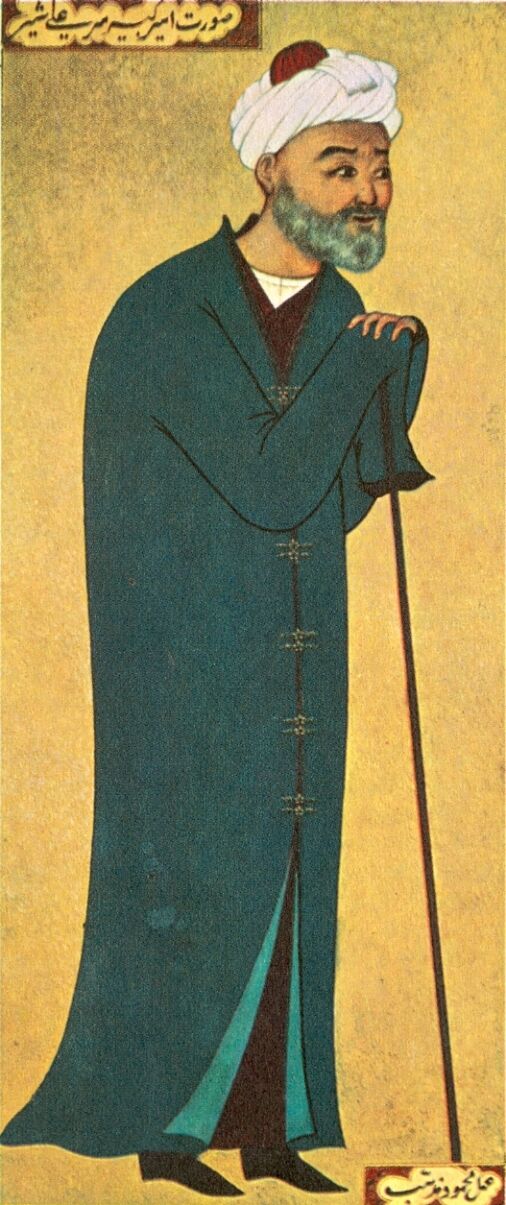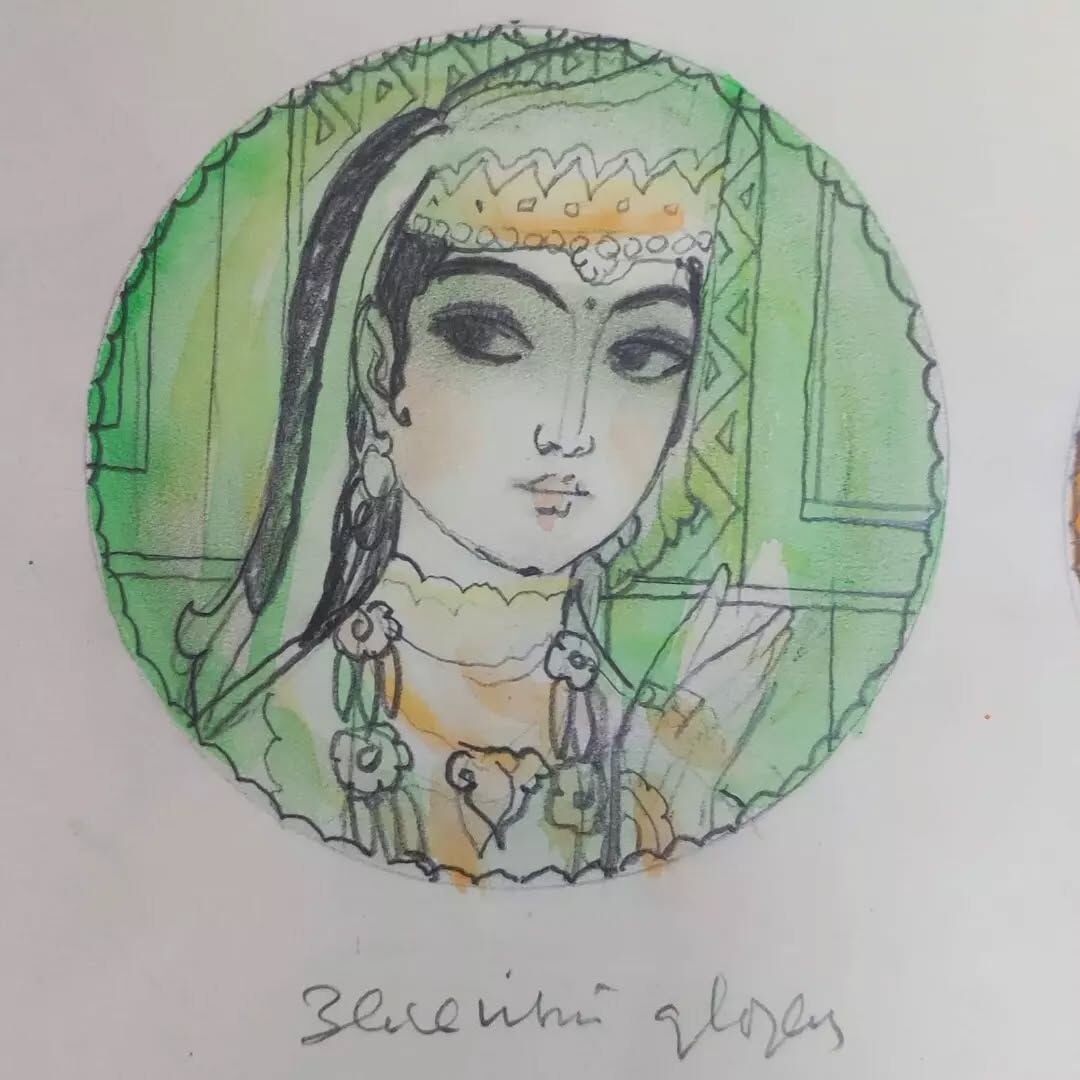Chor paykal
WHAT CAN WE LEARN FROM THE WOMEN İN ALİSHER NAVOİ’S "HAMSA"?

"The world has seen a thousand rulers rise,
Yet, all have walked the path to dust and night.
But few among the poets claim the prize,
A realm untouched by time’s relentless flight.
For five long centuries, his lion’s might
Still binds the world in verses rich and strong.
Where Timur’s sword once faltered in the fight,
Navoi’s kalam¹still reigns through art and song".
Abdulla Оripov
What is true world domination, and how are its goal and existence measured? Which of the great conquerors who shook the seven lands has found peace in the gold they unearthed from the depths of the earth? From Genghis Khan to Akbar’s grandfather, Amir Timur, from Napoleon to Tsar Nicholas – whose empire has remained unchanged on the map? These questions have a name – RHETORİC! No one has ever conquered the world the way masters of the pen have. No monarch has built monuments and minarets of spirituality and enlightenment like a poet or writer. Millions of literary captives have yet to be born. This is an eternal journey, a timeless life, and an enduring greatness.
Alexander Sergeyevich Pushkin, the founder of Russia’s Golden Age of Literature, spent his entire life striving to preserve the purity of his language and instill pride in it among the French-influenced Russian aristocracy. He left behind a literary legacy of over 25,000 words. William Shakespeare, who revolutionized English and world theater, used 29,000 words throughout his illustrious career.
Alisher ibn Giyath al-Din, born into a family of high-ranking officials, embarked on his literary crusade in the 1400s, at a time when Persians had infiltrated every corner of Herat (the capital of the Khorasan region), dominating the language of the elite and the cultural aristocracy. At the same time, Turkic was dismissed as the "tongue of beggars." In this battle of languages, Navoi triumphed over Persian, commanding an army of 50,000 words, penned across his five divans³ (poetic collections), and laying the foundation for the modern Uzbek language. His works call for humanism, purity, and moral excellence. It is no coincidence that on the planet Mercury, now a symbol of intellect, a crater bears his name. Statues honoring him grace cities such as Osh, Baku, Moscow, and Shanghai.

Photo: 16th-century portrait of Ali-Shir Nava'i by Mahmud Muzahhib, Museum of the Astan Quds Razavi, Iran
Navoi was a great figure, a visionary creator. The human values he celebrated in his works remain universal ideals sought by humanity to this day. The women he depicted, their inner worlds, and their portrayals in his poetry reveal beauty and nobility and a masterful reflection of their place in society.
In honor of the 584th anniversary of the birth of the Sultan of Words, Nizamiddin Mir Alisher Navoi, we reflect on the queens of his literary universe—not only their peerless beauty but also their inner struggles and depth.
Shirin – the princess who ılluminated the world
Navoi scholars often say that wherever a monument to Navoi stands, there should also be one to Husayn Bayqara. Without the friendship and royal patronage of Bayqara, Navoi would not have been able to create so freely. Just as Tsar Nicholas famously said of Tolstoy, "Do not touch my lion!" the Timurid prince Bayqara would often exclaim, "Alisher is my heart!"
The climax of Navoi’s epic poem "Farhad and Shirin" revolves around Farhad, the prince of China. Farhad was not only beautiful and kind, but he could carve through mountains as if slicing butter and never needed to reread a book, remembering every word from a single glance. Through Farhad’s character, Navoi paints the portrait of the perfect man. But what role did Shirin play in shaping Farhad? Was Shirin truly worthy of Farhad, or was Farhad worthy of Shirin?
Shirin’s beauty was so radiant that Farhad fainted each time he saw her reflection in a magical mirror. At a second glance, he collapsed again. At the third, he lost all sense of reality. But Shirin was more than just a face, she was an educated, wise, and compassionate woman from Armenia. By endowing Shirin with these qualities, Navoi sets her apart from the “Shirin” of earlier "Hamsa"³ poems. Unlike the sharp and demanding Layla, Shirin openly expresses her feelings, actively participates in Farhad’s development, and influences his fate. Her role in his life is not just as an object of desire but as a guiding force. In Shirin’s soulful depth, Navoi celebrates the beauty of a woman’s heart, her capacity for sacrifice, and her ability to shape family and society. He acknowledges that a woman is as significant as a man, an equal partner in the fabric of life.
Layla – the angel of true love
One of the greatest virtues in life is sincerity, don’t you think? Engaging in honest conversations and expressing genuine wishes for someone is not as difficult as we imagine. What is much harder, however, is feeling true sincerity, to love purely, without any worldly ties or expectations. This is, perhaps, the most distant and dangerous valley one can ever reach.
In Navoi’s poem "Layla and Majnun", a young man named Qays is consumed by divine love from childhood. He becomes a wanderer, roaming the forests with gazelles, endlessly searching for true love. Then, one day, he meets the incomparable beauty, Layla, and instantly falls in love. Overwhelmed by his feelings, Qays begins to pursue Layla, watching over her home day and night. Each time he knocks on her door and she asks, "Who is there?" he answers: "It is me, your madman." In that moment, Qays transforms into Majnun, a symbol of love’s madness, an embodiment of suffering in the name of devotion. Yet, Layla does not open the door. Why? Because Majnun does not truly love Layla, he loves his love for her. He cherishes the idea of loving Layla, his idealized vision of her, and the suffering that comes with it. Layla, however, waits for something different. She waits for real love, love that is directed toward her, not toward a fantasy or an infatuation. It is only when, for the last time, Layla asks, "Who is there?" and Qays finally answers, "It is me, Qays." that the path to her heart is opened.
Each of us must learn from Layla the importance of self-respect and self-love. A person who truly loves themselves does not delight in another’s suffering, does not seek praise and validation from others, and does not need a lover who worships them blindly. A person who loves themselves shares their love with the entire world. And just like Layla, she does not wait for a Majnun, she waits for a Qays.
Each of us longs for someone who loves us for who we truly are, not for the act of loving us, not because we mirror their ideals, not because we are compatible by status or circumstance. But are we ready for such love as Layla had? Do we desire it as deeply as she did?
Answer that for yourselves, dear women! …
Dilorom – the beginning of strong women
Many Navoi scholars and literary critics regard Dilorom as the boldest and most fearless heroine among the female figures in Hamsa. And for good reason.
Dilorom is not just a beautiful young woman – she is a rebel, standing against societal norms that diminish women’s strength and perpetuate the notion of female fragility. She defies these so-called eternal truths, proving that women are just as capable, if not more so, than men. A pivotal moment in the story is the hunting scene, where Shah Bahram, unable to accept Dilorom’s unmatched skill, subjects her to humiliation and suffering before abandoning her in the wilderness. After all, how could an ordinary girl hit a deer in both legs with a single arrow on her first attempt?
To erase the memory of Dilorom’s beauty and the shame he felt in her presence, Bahram ordered the construction of seven palaces, one for each day of the week. The finest architects and artisans from across the world are summoned to build these palaces, each a masterpiece in its own right, adorned in gold, silver, and emerald hues.
Yet, even in his lavish surroundings, Bahram finds no peace. He cannot come to terms with the idea that a woman could match, or even surpass, him in skill. He is tormented by the realization that true greatness is not defined by status or power but by the mastery one hones over time. And so, his restless soul finds no solace in his seven magnificent palaces. There is only one path left – to seek out Dilorom once more.

Photo: Instagram / shakhnazart
Ravshanak – the beauty that captivated the world’s conqueror
In Navoi’s epic poem” Seven Planets”, the legendary Alexander the Great, known as Iskander, takes center stage—not as a warrior, but as a man in love.
Anyone familiar with history knows that Alexander set his sights on the lands beyond the river, but his mentor, the great philosopher Aristotle, warned him: the people of those lands, their culture, and way of life are vastly different from those of Greece. Undeterred, Iskander arrives at the gates of these foreign lands with a highly trained army, armed with military genius, vast experience, and prayers from his mother, calling upon the gods for victory. Yet, imagine this: all his war strategies, all his strength, and all divine blessings crumble before the beauty of one woman – Ravshanak, the Queen of Sogdiana (Roxana).
But this is not just a love story. It is a tale of something even more profound – the transformative power of human connection. Deep emotions, maturity, a broader perspective, and the values of another person can shape one’s character, foster self-awareness, and even awaken a love for life itself. Ravshanak embodies this truth through her love for Iskander; she proves that love is not merely about romantic attachment – it is about igniting the highest virtues within another person, becoming the reason for their growth.

Photo: Instagram / shakhnazart
For nearly six centuries, Navoi has glorified women, celebrating their resilience, unique and sometimes complex nature, and unparalleled beauty, erecting monuments to them in his works. We are certain that among our readers, there are many Shirins, Laylas, Diloroms, and Ravshanaks – women of strength, wisdom, and grace. We hope that on this great day, the birthday of Hazrat Navoi, they will mark the occasion by reading one of his ghazals with their loved ones, honoring the legacy of our greatest poet.
[1] Kalam – The pen.
[2] Divan (Persian: ديوان – "ledger," "bureau"; Divan, Diwan) – In the literature of the Middle East and Central Asia, a collection of short lyrical poems by a single poet or a group, compiled based on a common theme or literary tradition (e.g., Divan of the Banu Hudhail Tribe). The poems are typically arranged alphabetically according to their rhyme.
Originally, the word divan in the East referred to a register or record, especially tax ledgers and government financial accounts, as well as the archives where these records were stored. Over time, this term came to denote a collection of poetry belonging to a particular author. Johann Wolfgang von Goethe introduced this term to European literature with his work West–Eastern Divan (1819).
[3] Hamsa – A group of Persian poets who compiled a series of five epic poems, establishing a literary tradition during the medieval period. These poems were distinguished by well-structured plots and clearly defined characters.


